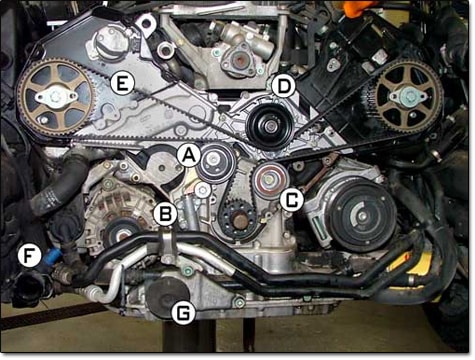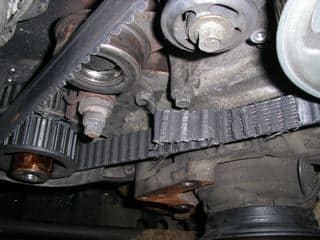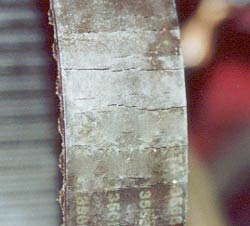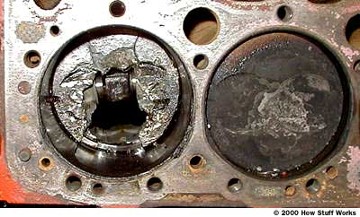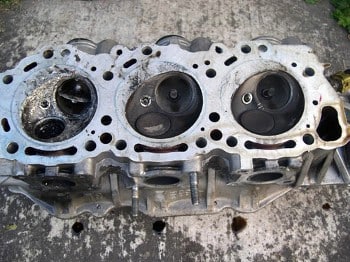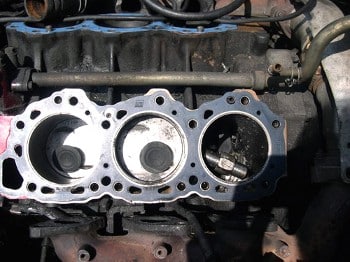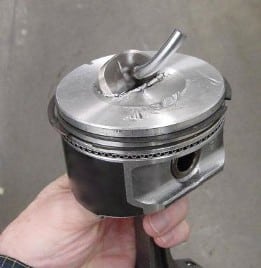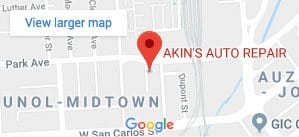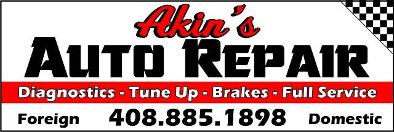

Car Timing Belts replacement service|San Jose, CA
We offer service and repair for most manufacturers.
Acura, Audi, BMW, Buick, Cadillac, Chevrolet, Chrysler, Dodge, Ford, GMC, Honda, Hyundai, Infiniti, Jeep, Kia, Lexus, Lincoln, Mazda, Mercedes-Benz, Mercury, Nissan, Oldsmobile, Pontiac, Scion, Subaru, Toyota, Volkswagen
Trust Akins Auto Repair with your next auto timing belt replacement service
We provide timing belt replacements for Toyota, Honda, Acura, Lexus, Mitsubishi, Hyundai, Volkswagen, Audi and many other manufacturers.One of the most important maintenance items is an engine timing belt. Modern high powered, small displacement motors are of a high valve lift, high compression design (known as collision) that can lead to serious engine damage if any part of the timing belt system fails “When replacing the timing belt it is highly recommended that you replace the timing belt tensioner,cam seal,crank shaft seal,drive belt,alternator belt,p/s belt,coolant,timing belt roller and water pump“ More often than not, it is not the timing belt that fails, but one of the bearing driven accessories that seize causing the belt to fail. AKINS AUTO REPAIR recommends servicing the timing system on a performance tuned vehicle on time,Contact us in San Jose California to schedule an appointment.
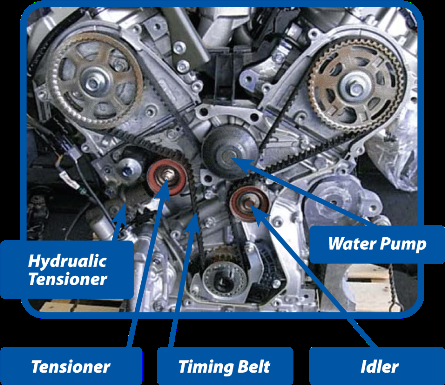
WHY DO I NEED TO CHANGE A TIMING BELT?
All vehicles with an internal combustion engine, meaning most engine types besides electric, are equipped with a timing belt. The purpose of this belt is to time the engine so valves, pistons and other internal parts move in unison.
We see one of the more common failures starting to occur. The timing belt has cracks on the other side, as well. These cracks in the timing belt usually occur where the teeth extend from the timing belt. The teeth on a vehicles timing belt have been known to shred off the belt at these cracks causing serious damage to the motor.
When a timing belt breaks it can cause internal engine damage to the valves and pistons. To access the valve and piston the engine had to be removed and separated. A broken belt will typically bend valves and in some cases even drive a valve through the piston. Don’t let a broken timing belt happen to you.
!!!!!!!!!! These are pictures of timing belt damage !!!!!!!!!!!
What is the Timing Belt all about?
The timing belt is a rubber belt located in the engine compartment behind the drive belts. Its job is to keep the crankshaft in sync with the camshaft(s), ensuring the proper timing and operation of the engine valves and therein, the engine.
Keep in mind:
- When replacing a timing belt, also replace the water pump, tensioner, and pulleys.
- If the pulleys and tensioners should fail after only replacing the belt, it can cause valve or piston damage and lead to more expensive repairs, in order to have the engine run properly. It is therefore essential to replace the whole set.
- We only replace the water pump if it is driven by the timing belt (true for 60% of the cars).
How it’s done:
- Remove accessories needed to gain access to engine timing cover.
- Remove engine timing cover, inspect timing belt and pulleys for needed parts.
- Remove and replace timing belt, water pump, pulleys, and tensioners.
- Reinstall timing cover and all removed parts.
- Start engine and check for proper engine operation and engine timing, as well as for cooling system leaks.
Our recommendation:
Follow the maintenance schedule provided by the manufacturer and replace the timing belt as recommended. The timing belt drives the water pump in 60% of the cars. The labor cost of replacing the water pump is significantly higher than the cost of the pump. While replacing the timing belt, it is cost effective to replace the water pump. We highly recommend replacing the timing belt pulleys and tensioners. The tensioner applies pressure to the timing belt keeping it tight, while the pulleys keep the timing belt in line. These components are sealed units that contain bearings (they cannot be lubricated on a regular basis). The bearings wear out over time and may seize, causing the timing belt to come off, which can cause major internal engine damage.
What common symptoms indicate you may need to replace the Timing Belt?
- Abnormal squeaking coming from the timing cover area.
- If the timing belt breaks, the car will not start.
How important is this service?
Ignoring the replacement of a timing belt as a part of scheduled maintenance, could result in major engine failure down the road. You should not wait for your timing belt to break, it must be serviced regularly.



